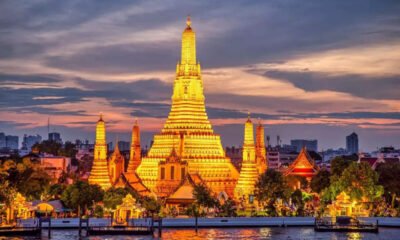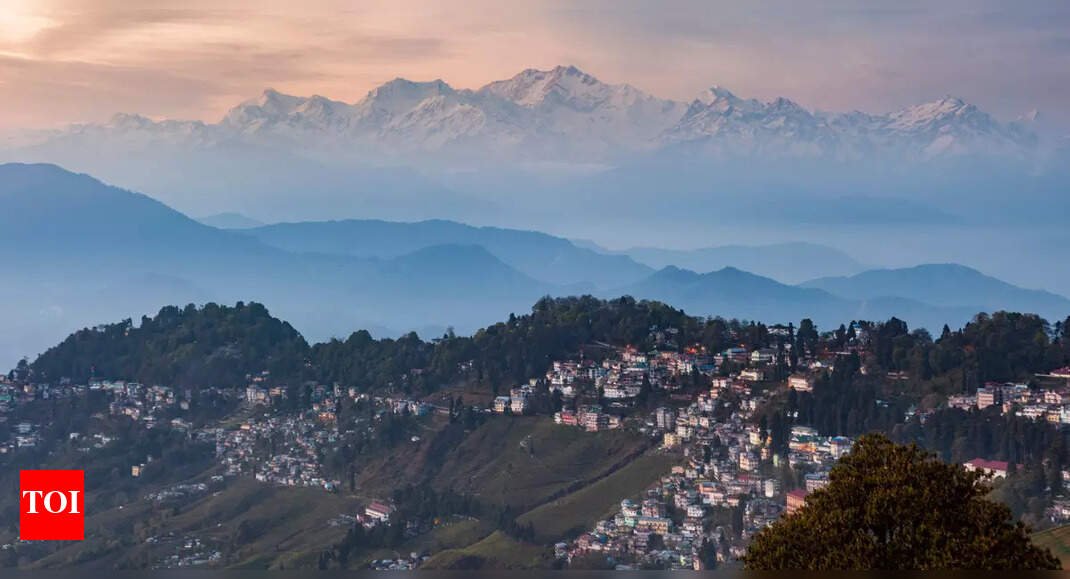Vacationing in India, is always about wandering off to the dry deserts in Rajasthan to the huge lagoons of Kerala to snow-capped peaks of Himachal. Despite all this, the Northeastern part of India is quite unexplored and has some of the most breathtaking landscapes and cultural treasures of the country. This part, including the so-called seven sisters: Arunachal Pradesh, Assam, Manipur, Meghalaya, Mizoram, Nagaland, and Tripura-Apart from Sikkim-has finally been put on the map for must-visits.
Raw, Untouched Nature
The North East of India is probably a land of the last unknown natural landscapes and undisturbed raw beauty. From rolling tea gardens of Assam to the ethereal living root bridges in Meghalaya, those from Kanchenjunga-housed Sikkim to Arunachal’s mystical-yet-iconic monasteries realize that the region indeed gives you every type of landscape imaginable. Those addicted to nature can trek through alpine meadows, visit dense forests abundant in biodiversity, or take river cruises on the mighty Brahmaputra. Away from the commercialized tourist circuits, the Northeast has that remaining charm and tranquility to retain.
A Cultural Kaleidoscope
The Northeast is a mix of all ethnicities, customs, and languages. Over 200 tribes inhabit this set of states, each practicing its local customs, dyeing, and craft; festivals and culinary flavors; it is an experience all by itself. The festivals like Hornbill of Nagaland, Sangai of Manipur, or Bihu of Assam offer spectacular glimpses into day-to-day life. Here one may sample native art forms, folk music, and crafts that are very ancient but stand apart from mainstream Indian culture.Read more: Beyond Marine Drive: 10 Mumbai parks best for family outing
Adventures Await
This is the region for adrenaline junkies. Right from cave explorations in Meghalaya to white-water-rafting in Arunachal, paragliding in Sikkim, or mountain biking on tough tracks in Nagaland, this part of North East India truly has it all for adrenaline junkies. The untouched terrain safeguards the purity of any such adventure experience across here.
Sustainable and Responsible Tourism
Conscious traveling is hitting zeniths, and drawing up an ecology road for the North East is a classic example of sustainable travel. The region’s community, deep-minded of ecology, has been carrying out ecologically conscious life for centuries. Choosing from different modes of responsible tourism is one of doing the eco-homestays, eco-camps that save the environment while restoring a livelihood for the locals.
Exploring Culinary Delights
North East denotes a plethora of culinary traditions, with each being a figure of a particular cultural identity. Each state has its culinary specialties-from from Assam fish curries that are sour and hot, to smoked meat and chilling atmosphere of Nagaland; from jadoh rice of Meghalaya, to momos and thukpa of Sikkim that are highly famous. Neither a few fresh herbs here, nor a couple of bamboo shoot there, in combination with those local spices, would guarantee that the food is worth reminiscing. So for those wanting to taste some real, off-the-beaten-path flavors-the region is a ready-made paradise to go to.Read more: 8 incredible safari tours around the world that aren’t about Big Cats
Boosting Connectivity and Infrastructure
Now with the availability of direct flights to such destinations from prime locations in the country such as Delhi, Mumbai, and Bengaluru, it is better observed with more accessibility. Improved road network, new airports, improved rail connectivity are all making the region ever more accessible. The “Act East Policy” of the government has also ensured increased investments for infrastructure, further opening gates for tourism. Easy access has been made possible currently because of new direct flights from metropolitan cities such as Delhi, Mumbai, and Bengaluru.
The Traveler’s Safe Haven
Perhaps due to not very many people being aware of the site, the Northeast really answers the description of a safest and most hospitable land for any traveler to venture into. The Northeast people, friendly and accommodative, are ever willing to share their culture with the outsiders. Single travelers, more often than not, especially female ones, rave about the safety and the sense of belonging they experienced when traveling in the region.
The Foreign Edge in Tourism
With international places becoming too pricey, North-East India can offer experiences at a fraction of the cost. It offers a pristine beauty that can compete with the alpine meadows of Switzerland; its wildlife sanctuaries can give others a run for their biodiversity; and its cultures are rich, rivaling Southeast Asia—all the while, making travel easier for the already home-based tourist. So, the place remains a hot cake not only for domestic tourism but also for international tourism. In many ways, North East India is no longer the “hidden gem” of India; instead, it is all set to steal the limelight in the tourism map of the country. In 2025, the spotlight will fall on the region as one that truly blends nature, culture, adventure, and accessibility. The North East is not just a destination but a genuineness, sustainable, and truly memorable travel alternative.Author:
Mr. Ravi Gosain, President, Indian Association of Tour Operators (IATO)































